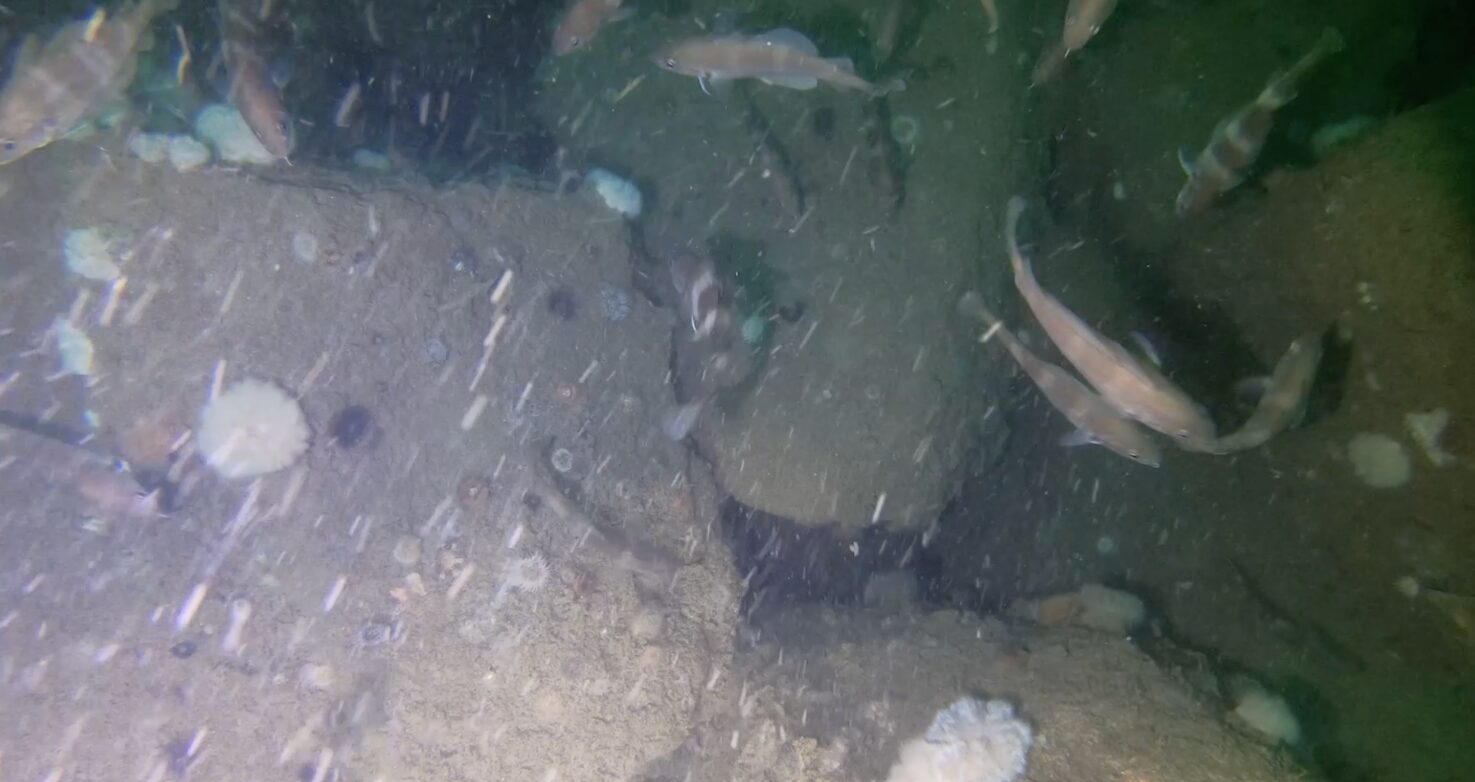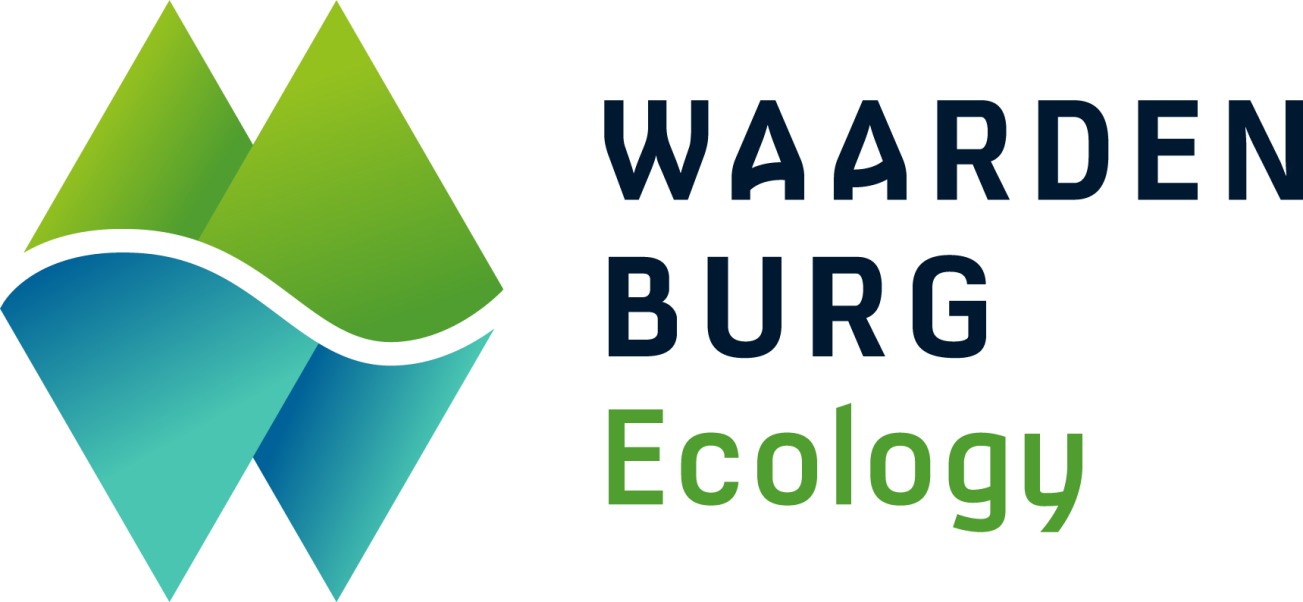This project investigates the ecological potential of large rock reefs installed as part of the Nature Inclusive Design strategy within the Hollandse Kust Zuid Offshore Wind Farm. Deployed between 2021 and 2022 at nine locations, these reefs consist of large boulders placed on the scour protection layer, forming structures approximately 8 meters in diameter and up to 2 meters high. Positioned safely away from turbine foundations and cables, the reefs aim to create stable, complex habitats for marine life. The project explores whether these structures can increase the abundance of Atlantic cod and overall biodiversity, while also assessing the technical, financial, and logistical feasibility of implementing rock reefs at scale in offshore wind developments.
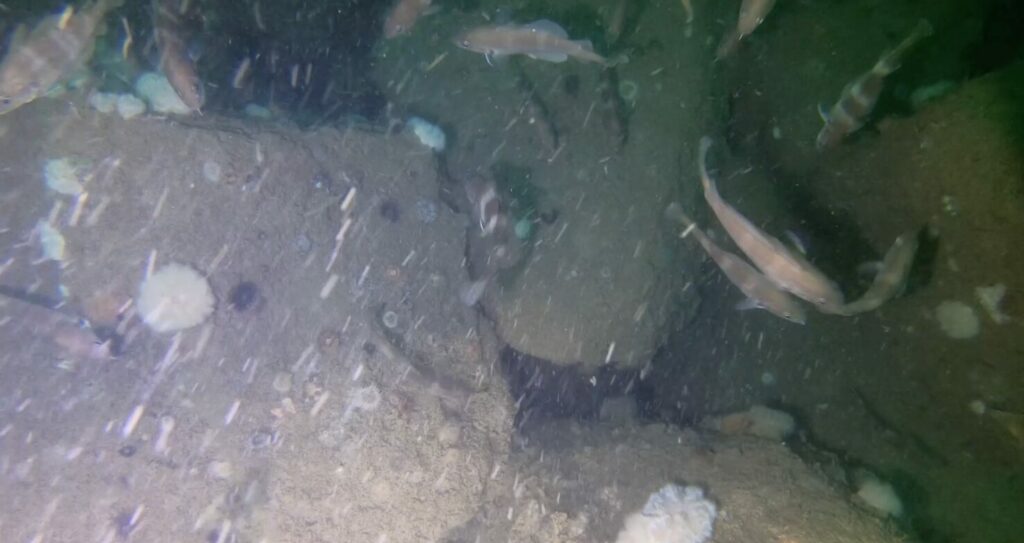
Methods
Nine artificial rock reefs were deployed using large rocks with a grading of 700–1000 kg and a D50 of approximately 80 cm—significantly larger than the conventional scour protection rocks, which typically range between 10-60 and 100–200 kg. Each reef has an approximate diameter of 8 meters and a height between 1.5 and 2 meters.
The installation process followed a three-layer sequence:
- Filter layer made of gravel,
- Armor layer consisting of conventional scour protection, and
- Rock reef layer placed on top using the larger boulders.
To avoid interference with turbine operations and existing infrastructure, the reefs were positioned at least 10 meters from both the turbine foundations and the cables at the base of the scour protection layer.
Ecological monitoring
The rock reefs are being monitored through two coordinated campaigns to assess their ecological effectiveness. These efforts aim to provide empirical data on how such structures contribute to biodiversity enhancement, particularly for key species like Atlantic cod, and to evaluate their potential as scalable NID elements in offshore wind developments:
- KOBINE Project (Wageningen Marine Research): This program focused on quantifying biodiversity gains—using metrics such as species richness and species abundance—while also assessing the cost-effectiveness of the rock reef design. Wageningen Marine Research used Remotely Operated Vehicles (ROVs) to collect visual data about the reefs, measuring species richness (number of unique species per substrate type) and species abundance (number of individuals per 100 m²). The project resulted in a cost-benefit modeling tool to inform future nature-inclusive interventions.
- Waardenburg Ecology (NID Monitoring Plan at HKZ): As part of the broader NID monitoring strategy, Waardenburg Ecology investigated the ecological functions provided by the reefs, such as shelter and feeding grounds. Their monitoring approach combines eDNA sampling and baited devices. These methods are used to assess relative abundance through species richness and the maximum number of individuals of a species observed in a single video frame.
Results
In the KOBINE project, using ROV, WRM found no significant differences in the species composition of the four prevailing substrates: scour protection, reef, sand and cable. Notably the species richness was found to be similar on the reef substrate and that of scour protection. Cod appeared to be more abundant on the reef substrate than any other, although this should be verified with more replicas to statistically test. This hints at effective habitat creation for a threatened umbrella species, by means of adding heterogeneously sized calcareous rocks on top of scour protection.
No results are available yet of the Waardenburg Ecology study.
Additional information
Negative effects of NID
According to KOBINE, rock reefs may facilitate the settlement of invasive non-indigenous species, potentially blocking habitats for native species and altering ecosystem dynamics. This risk is amplified due to the lack of regulation and oversight related to biofouling on OWF infrastructure.
Recommendations
The KOBINE study recommends to conduct comprehensive life-cycle assessments (LCAs) supported by field monitoring and quantitative ecological modeling to better understand both local and broader-scale impacts of OWFs and nature-inclusive design elements like rock reefs.
Knowledge gaps
Rock reefs are expected to enhance local biodiversity and provide shelter for marine species such as Atlantic cod, but their long-term and large-scale effects are not yet fully understood. It remains unclear how these reefs influence the movement of marine larvae, or whether they might support the spread of non-native species. The combined impact of these elements on the wider ecosystem is still being studied. Continued monitoring and research are essential to ensure that rock reefs contribute positively to marine nature as offshore wind development grows.
Discover the marine life around rock reefs
Dive beneath the surface and explore the underwater world of HKZ! This footage, captured as part of the KOBINE project of WMR, reveals how the rock reefs and scour protection are creating rich new habitats. Watch as a variety of marine species find shelter and feeding grounds among the structures, showing the positive impact of nature-inclusive design at this offshore wind farm.
Products used on this project
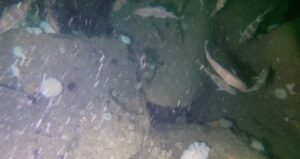
Rock reefs
VattenfallRock reefs are built with larger rocks than conventional scour protection, placed on top of the regular scour protection, to benefit reef-associated species like Atlantic cod.
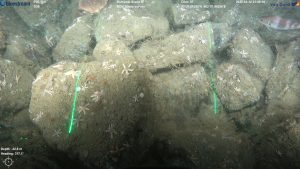
Boulders
Boulders are large pieces of natural stone which vary in weight and size (>25 cm in diameter). Marble, granite, and other types can be used to create crevices and shelters that become havens for marine life.
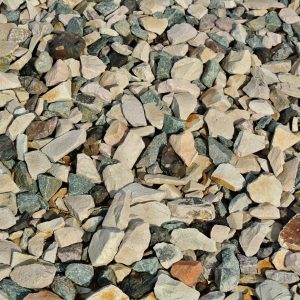
Gravel
Reef-stimulating natural substrate that offers a habitat for species that specifically need gravel beds to settle.
Let's connect
Ready to dive into nature enhancement? Send us an email to share your questions, feedback, or projects you’re working on.
